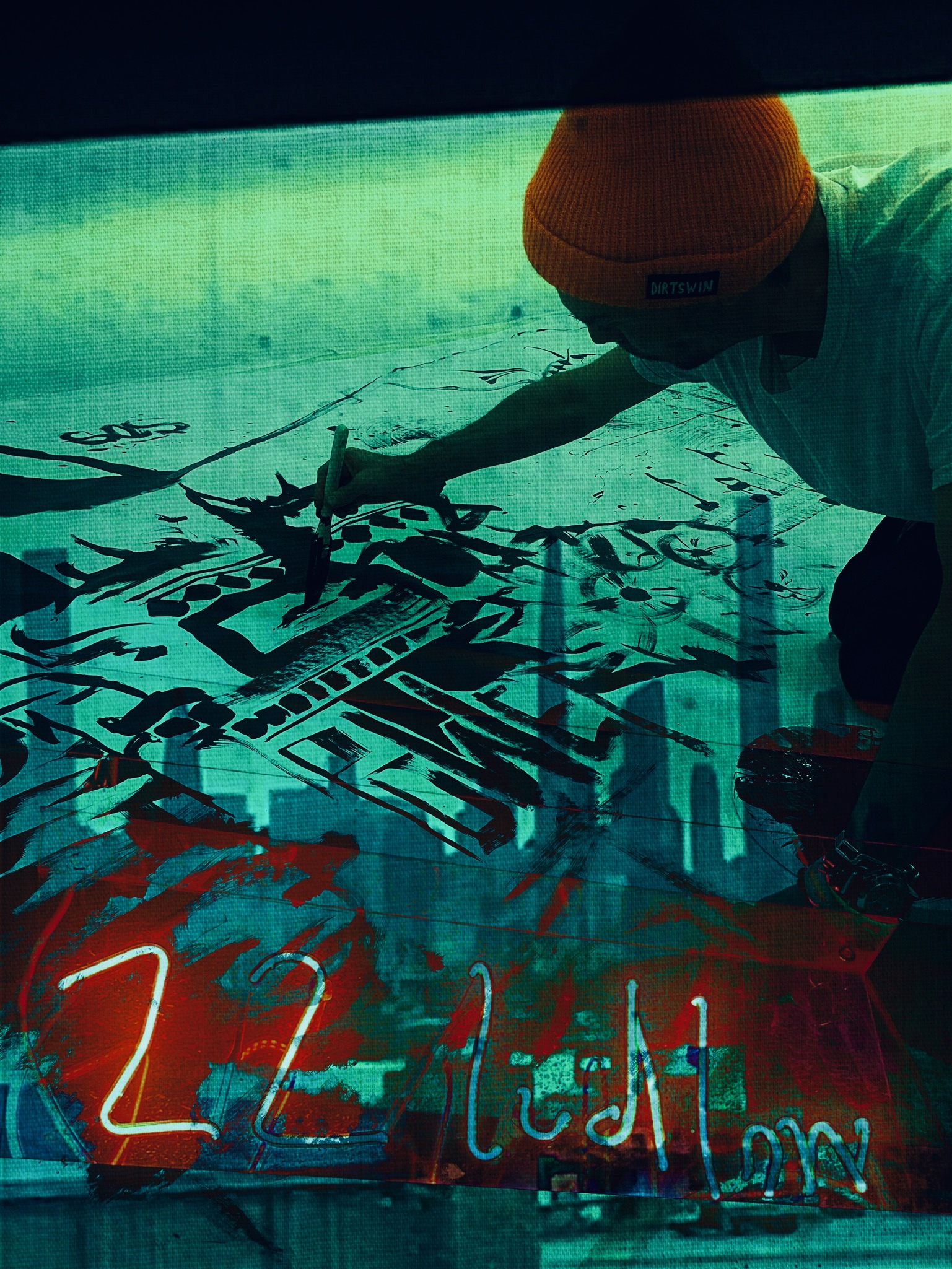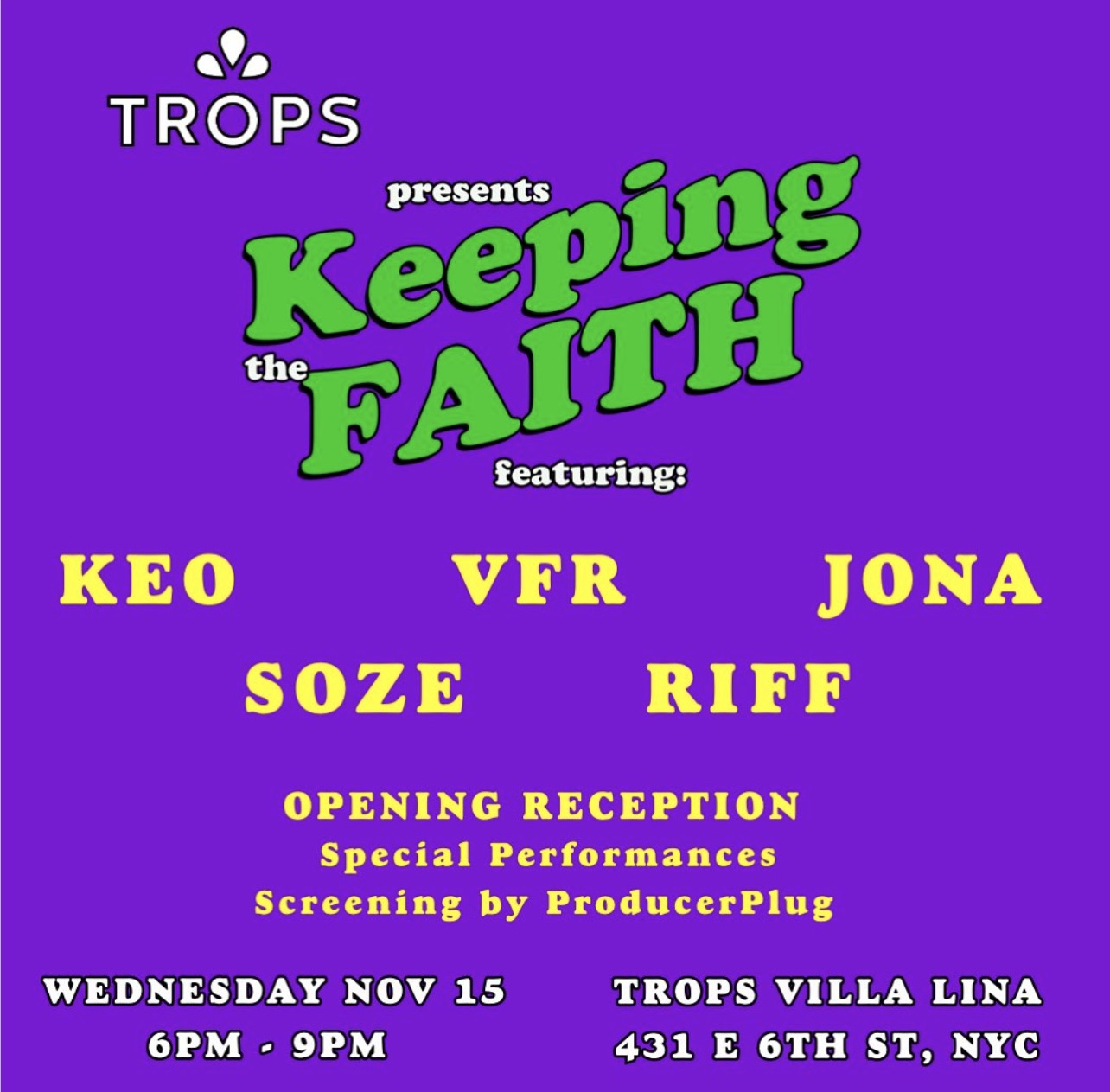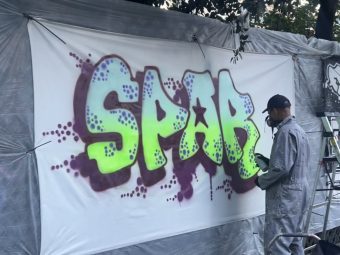Style Writing
In the Style Writing world, terms such as "graffiti" were not considered representational of the movement. The artists in this tradition call themselves "writers" as the foundation of their work is primarily letters and messages that are manipulated into stylistic, complex forms and continue to develop into abstraction and figurative works.
Al Diaz and Kate Storch Artist Talk by Amelia Alberti in front of Patti Astor Tribute at FSG Park in NYC
Style Writing: The Origins and Evolution of a Movement
"We can trace the origins of graffiti back to the Lascaux Caves, Egyptian hieroglyphs, fresco murals on cathedral walls, or the Roman vandals that defiled the Pasquino statues. The modern style-writing movement in New York used the same forms of satirical poetry to express disbelief in the system, show solidarity, or serve as a proclamation of individual identity within a larger community. But unlike previous centuries of public “vandalism,” the New York writing scene harnessed a unique tool: public transportation. Trains transformed public works of art from solitary moments of reflection into portable messages of rebellion. Their works were no longer bound to physical space or time – their names spread across the city like venom, a constant stream of visual rallying cries that inculcated anyone in their wake. When asked why he thought this movement spread throughout the world, Coco 144 said, “making your mark is a contagious virus with no known vaccination or cure.'"
My Name Was Writ In Water
John Keats's tombstone bears no mention of his name. Passersby might overlook it were it not for the somber epitaph etched at Keats's request. "Here lies one whose name was writ in water," these poignant words embody the final sentiment of a young poet who feared his words would vanish into obscurity.

My Name Was Writ In Water Opening Reception
"In the wake of the Civil Rights movement, a generation of children took to the streets, and signed their names to the trains and walls of a crumbling New York City infrastructure. If unique autographs- like Coco 144- were a significant form of self-expression in their unadorned form, this group practice would undergo in time a transformation, what Phase 2 described as an “evolution of style” towards a convoluted new application of the alphabet Tracy 168 called “wild style”. This innovative language dismissed as “graffiti” by the media was illegible to the outsider, and a creative call-to-arms for the initiate, a battle of letters and words Rammellzee dubbed “Iconoclast Panzerism”. Finally, writers would eschew the signature altogether, and pure abstractions would serve as the artist’s calling card, beginning with Futura’s seminal non-representational “break train”. The subway era was brought to a dramatic finale with the spontaneous compositions of Jon One, who would go on painting in the same vein to art world acclaim overseas. And in the short, rich career of Lance De Los Reyes, this story is recapitulated from his first humble Rambo tags, to an abstract body of paintings famed for sophisticated color instinct and poetic impact. In this historical context, The Trops presents My Name is Writ in Water, a survey of abstractions curated by Mike Malbon and Nemo Librizzi."
On Message Off Grid
On Message Off Grid was an installation by Jona Cerwinske in collaboration with the Trops in New York City. Presenting works created in situ, On Message Off Grid showcased the gallery format as the ultimate studio visit, as the artist created additional works across the streetscapes of NYC.


“I create in a marriage of two art forms that rebel against each other. I come from a generation when galleries did not accept anything from the street. And, vice versa, the street wanted nothing to do with the galleries. I had to experiment with what that looked like, combined.”
Jona Cerwinske
Keeping The Faith
This exhibit presents community paintings created live in NYC’s public spaces, and are representative of the sort of pieces that were done on the walls, streets, and trains that manifested into a global movement. Mark making attached a figurative significance to the individual spirit that guides self-expression in these exhibitive spaces; however, in their original contexts, the art of writing was not necessarily intended as a painting in the western sense of the word. These works, painted by legendary living writers, are contemporary developments of the Style Writing tradition and bring the vitality of the culture into canvas.

Train Writers Collection
Shop our “Train Writers” collection, featuring artwork from FSG Park.
Featured Style Writers
See more of our featured artists, where creativity takes center stage. Find out more about the person behind the unique styles, and discover the diverse talents shaping Style Writing today.
Jona Cerwinske
Miami based artist Jona Cerwinske combines classical fine art practices with the tension, style and speed of street art and Stylewriting.

Jona Cerwinkse by Fabien Palencia
Lance De Los Reyes AKA RAMBO
Rambo was a New York-based graffiti artist best known for his depictions of upside-down crowns and poetry painted across billboards and buildings.

Lance De Los Reyes By Eva Mueller for Quiet Lunch, 2016
An Interview With JonOne
Alexandra Kosloski interviews inspirational artist JonOne, a "writer" who went from painting trains in NYC to critical acclaim across the galleries in Paris.
"At the time when I left New York, the trains were being painted over. And they were really hard on graffiti writers, on vandals, really, really hard. Which they shouldn't have been because in Europe, everybody was more cool about it there. And New York was supposed to be the land of free and the brave and all that stuff, but they were too much– just too… you know. So here, I was able to continue to paint freely and not feel like I was being persecuted. A little bit like the jazz musicians were; that moved from New York or from the US and moved over to Europe, that felt more free expressing themselves in Europe than in the States. That's the way I felt."
JonOne
Richard Hambleton
Conscious Darkness is a three part series in which Nemo Librizzi shares memories of Richard Hambleton, a seminal artist who made his name in 80's NYC culture with his iconic shadow figures.
The only thing “street” about Hambleton was that his first works in New York City happened to have been painted on public property, the DOA series conceived directly on the sidewalks and asphalt, then the painterly shadow men that would make his bones as a living legend. Unlike the aforementioned artists who premiered in the trenches alongside the roguish graffiti demi-monde, Hambleton’s shadows painted on the wall did not need to be painted on the wall to be transformed into Art in context, and neither was there any entropy in the eventual transplanting thereof onto canvas, to hang in some white box with the grandeur of crown jewels. Anyone with a modicum of knowledge of Art History could draw a line directly from Monet’s splattered Water Lilies, Picasso’s expressive contortions, Pollock’s liberated unconscious arabesques, straight through Richard Hambleton’s punk rock sprezzatura sensibilities.
For the Richard Hambleton Private Catalog:
contact@thetrops.com















